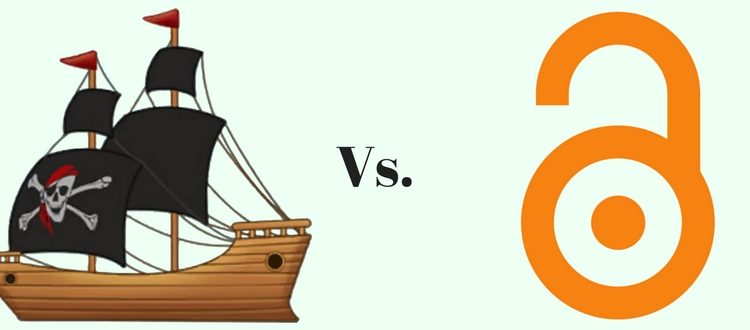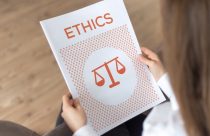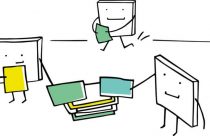Is Pirate Black Open Access Disrupting Green & Gold Open Access?

Efforts to create open scholarly communications are an ongoing process within academic publishing, amid conflicting views on open access models. In this context, publications directly made open via the publisher are considered Gold open access, while those made available via institutional repositories are Green open access. However, a majority of scholarly records still remain behind paywalls, because publishers hold the ownership to intellectual property in journals.
Inevitably, a third and more controversial model, pirate black open access, has gained precedence over the green and gold models of open access. Sci-Hub is a website that infamously enabled pirate black open access to the usually paywalled academic journals. The site gained admission through institutional proxies to bypass publisher paywalls and permit broad public access to academic articles. Although academic publishers have sued the website for blatant piracy, some researchers consider this approach to be an effective and necessary means of civil disobedience. The controversy has, therefore, prompted many traditional academic publishers to reconsider their existing models of gold and green open access.
A recent Op-ed on Wiley articulates the multifaceted problem, to ask hard-hitting questions that evaluate the drawbacks of the conventional models.
- Is green and gold open access inherently flawed?
- In light of the rising popularity of black open access, could gold and green open access have achieved more?
- Could the academic publishing models be refined to eliminate piracy?
The Piracy Conflict
To begin with, Sci-Hub has impeded conventional open access frameworks through illegal enabling of nearly all scholarly literature thereby making it freely accessible. Comparatively speaking, stakeholders in scholarly communication have only managed to enable access to select research articles, while the rest remain behind paywalls. Statistically, a large cohort of publications will remain unavailable via legal channels for most people in 2017. As an example, when the music industry was rife with pirates, the business model needed a revolutionary change to attract users beyond free downloads. These efforts succeeded with the advent of iTunes and other streaming options targeting pay-to-download services. This concept has direct implications for the existing green and gold open access models because they appear conventionally inept at present.
The existing models are far from the revolutionary business frameworks required in the present intellectual landscape. The ideal open access model would have >80% of the market share, mitigating the pirates, to create a sustainable platform. While certain platforms such as BioMed Central, PLoS, and ArXiv are sustainable, the share of all articles remains marginal. However, the concept of academic piracy or “guerrilla open access” can be progressive, driving development and intellectual curiosity. How then must remodeling occur to upgrade the conventional models and overcome their inherent flaws while also allowing for a revolutionary change?
Coordinating Change
A recent report on research consulting identified at least five stakeholders and roadblocks requiring elimination to deliver 100% open access. This indicates significant amounts of change at the level of each stakeholder; therefore, the change appears almost implausible. For instance, one stakeholder, the author, must coordinate green open access with the journal of interest to avoid conflicting models of publishing. Because of the lack of effort at the single stakeholder level, just 13% of Spanish researchers published green versions. Conversely, more researchers enabled full-texts on ResearchGate regardless of simultaneous copyright infringement.
Since the number of new articles published in gold open access is less than 20%, authors do not prefer this model. To transfer between green and gold open access, the following stakeholders are required to initiate change:
- Author
- Author’s Institution
- Funder
- Librarian (reader-side)
- Publisher
- Reader
Furthermore, the changes require concerted execution, thereby withholding internal workflows, leaving the conventional open access models unaltered. Perhaps the airline industry could offer the next clue to resolve this academic conflict.
Unbundling Publishing Services
Incidentally, the airline industry model is not entirely different from the multi-stakeholder, global, and policy-bound environment of scholarly communications. Air travel too has evolved from its traditional model to produce an unbundled product with additional costs beyond the core service. Unbundling allowed low-fare airlines to expose extras to the market/passenger, for a cost-effective strategy based on the passenger’s decision. Similarly, a large number of services in scholarly communication can become unbundled. To achieve basic levels of open access, publishers could freely offer basic read-only services first while seeking revenue from surrounding services. This would qualify as cost-free open access, requiring only one stakeholder, the publisher, to deliver the change.
However, beyond the unbundled basic free service to readers, what other services may separately provide an income for scholarly communication? It is possible to provide unbundled options to stakeholders for select services. For authors, these could include peer review management, copy-editing, and language services for refined context. Readers could get access to downloadable citations tools, alerting services, and online analytics. Librarians could be provided with metadata for catalog databases and funders offered reports by subject area. All these are possible avenues for unbundled revenues. Eventually, the publishing industry too can democratize scholarly communication, based on what works, much like the airline industry does. The concept will result in increased readership, stimulating the market for services and enabling new budgets. The niche audience can further increase revenue via digital advertisers targeting a scholarly demographic.
In Conclusion
In the “age of digital disruption,” the conventional structure of green and gold open access remains inflexible, requiring a revolutionary change. Pirate black open access has recognized this need to create a revolutionary, albeit illegal change in response. It is, therefore, time for academic research publishers to follow the course and alter the stakeholders view to achieve the necessary and legal changes.
In order to facilitate this process among stakeholders, initiatives such as CHORUS have implemented smooth and streamlined processes. Similarly, Springer–Nature is experimenting with the concept of free-article sharing via SharedIt. Furthermore, unbundling the product would allow all content to be freely available, thereby allowing publicly funded research to gain an increased readership. The concept of unbundling, starting with the publisher, would present stakeholders the choice to pay for individual benefits of communication. This concept would be more sustainable, less expensive, and exponentially less controversial than the ongoing versions, in the end.









